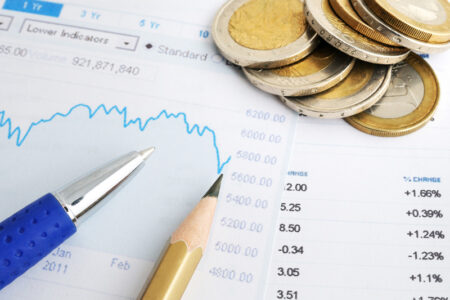By Scott Murdoch
SYDNEY (Reuters) -Asian share markets retreated on Tuesday as global investors awaited India’s official election results and considered the prospect that the U.S. economy’s ‘exceptionalism’ is starting to unwind as manufacturing activity there further weakened.
MSCI’s broadest index of Asia-Pacific shares outside Japan was down 0.4%, after U.S. stocks ended the previous session with mild gains. The index is up 2.1% so far this month.
Australian shares were down 0.15%, while stock index slid 0.11%.
Hong Kong’s was up 0.33% and China’s CSI300 Index up 0.23% after initially opening in negative territory.
In India, share markets sold off sharply after early vote counting showed Prime Minister Narendra Modi’s Bharatiya Janata Party (BJP)-led alliance was not headed for a landslide win as predicted.
A Modi victory had been expected to be positive for the country’s financial markets, according to analysts, on the hope India will undertake further economic reform.
But the reduced prospect of Modi’s alliance winning an overwhelming majority rattled investors.
The Nifty index dropped as much as 5.43% to 22,000.60 points, while the BSE index fell 5.4% to 72,337.34 points. Both indexes had touched all-time highs on Monday.Both markets recovered slightly to trade down around 2.3% each.
In early European trades, the pan-region slipped 0.1% to 5,007, German were down 0.21% at 18,615 and were down 0.09% at 8,265.5.
U.S. stock futures, the , were up 0.01% at 5,297.8.
The strength of the U.S. labour market will be closely watched in the new few days with the Job Openings and Labor Turnover Survey (JOLTS) due to be published later on Tuesday. Non-farm payroll figures for May are out on Friday.
“We’re expecting a slight easing in demand for labour in the U.S. market,” said Raisah Rasid, JPMorgan Asset Management’s global market strategist.
“What does that mean for the Fed? I think all data points to one interest rate cut later in the year, potentially in December. If the data moves in a different direction than expected that cut could be moved forward to September.”
In Hong Kong, the city’s Hang Seng Mainland Property Index rose 2.5% following a Citigroup research note upgrading the target prices for 23 Chinese property companies it covers.
“We are starting to see more green shoots in China, especially after the measures and stimulus that has been revealed for the property sector,” said David Chao, Invesco Asia Pacific’s global market strategist.
“More measures are expected. That is helping to develop a risk on environment in Asia, emerging market Asia and equities over bonds. I think there is still some more to go in the recent market rally that we have seen.”
The yield on benchmark reached 4.4099% compared with its U.S. close of 4.402% on Monday. The two-year yield, which rises with traders’ expectations of higher Fed fund rates, touched 4.8245% compared with a U.S. close of 4.818%.
On Monday, U.S. Treasury yields fell to the lowest point in two weeks, after the country’s manufacturing activity slipped for the second consecutive month in May.
The two-year yield was 6 basis points lower while the 10-year yield was down 11 basis points.
“The sharper move at the long-end is a sign that weaker manufacturing data is unlikely to shift the dial on Fed rate cuts near term, but is perhaps a signal of the market’s view of neutral interest rates as US economic exceptionalism fades,” Westpac economist Jameson Coombs said in a note on Tuesday.
In Europe, investors expect the European Central Bank on Thursday to cut the benchmark rate by 25 basis points to 3.75%.
The dollar rose 0.13% against the yen to 156.3 in Asian trading on Tuesday. It is still some distance from its high this year of 160.03 in late April.
The European single currency was up 0.1% on the day at $1.0912, having gained 0.65% in a month, while the , which tracks the greenback against a basket of currencies of other major trading partners, was down at 104.
dipped 0.88% to $73.57 a barrel. fell to $77.77 per barrel. Both benchmarks slid to four-month lows on Monday after the Organization of the Petroleum Exporting Countries and allies, together known as OPEC+, agreed to start unwinding some production cuts from October.
Gold was slightly lower. was traded at $2348.64 per ounce. [GOL/]
Read the full article here
















